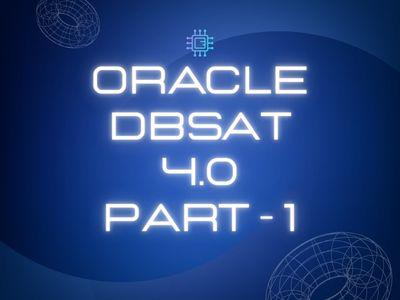- February 9, 2024
by Shubham Kale, Oracle DBA - Data Patrol Technologies
- Introduction
- Time-Based Partitioning
- Automated Database Tuning
- Bi-Directional Replication Enhancements
- Improved JSON and JSONB Support
- Parallel Query Improvements
- Enhanced Security Features
- Conclusion

Introduction:
PostgreSQL, renowned for its robustness and extensibility, takes a significant leap forward with the release of PostgreSQL Database 16. Packed with cutting-edge features, this version solidifies PostgreSQL's position as the preferred choice for modern database management. In this exploration, we will delve into the standout features that make PostgreSQL 16 a game-changer in the evolving landscape of database technology.
-
Bi-Directional Replication Enhancements:
For those relying on replication for high availability, PostgreSQL 16 brings improvements in bi-directional replication. This ensures more robust failover mechanisms and better conflict resolution, contributing to enhanced resilience in distributed database setups. These enhancements make PostgreSQL 16 even more reliable for mission-critical applications.
- Improved JSON and JSONB Support:
As the use of JSON and JSONB data types becomes more widespread, PostgreSQL 16 enhances support for these formats. Improved indexing, querying, and manipulation capabilities for JSON and JSONB data make PostgreSQL an even more attractive option for applications dealing with unstructured data. This enhancement positions PostgreSQL as a versatile choice for diverse data types and structures.
- Time-Based Partitioning:
Managing time-series data receives a substantial boost with the introduction of time-based partitioning in PostgreSQL 16. This feature streamlines the organization and querying of temporal data, leading to enhanced performance for applications dealing with time-related datasets. It simplifies data management, making it more efficient and responsive to time-centric queries.
- Automated Database Tuning:
PostgreSQL 16 takes a leap in intelligent automation for database tuning. The system can now analyse query performance and autonomously adjust configurations to optimize execution plans. This proactive approach to tuning simplifies database management, ensuring optimal performance without the need for manual interventions.
- Parallel Query Improvements:
PostgreSQL 16 introduces significant enhancements to parallel query execution. The query planner has undergone optimisation, enabled better utilisation of parallelism and resulted in improved performance for queries dealing with large datasets and complex structures. This enhancement is a boon for efficient handling of resource-intensive operations.
- Enhanced Security Features:
PostgreSQL 16 introduces significant enhancements to parallel query execution. The query planner has undergone optimisation, enabled better utilisation of parallelism and resulted in improved performance for queries dealing with large datasets and complex structures. This enhancement is a boon for efficient handling of resource-intensive operations.
Conclusion:
PostgreSQL 16 exemplifies the open-source community's commitment to innovation and excellence in database management. The highlighted features provide just a glimpse of the comprehensive improvements introduced in this release. Whether your focus is on performance optimization, security, or ease of management, PostgreSQL 16 offers a compelling array of features to meet the evolving needs of modern applications.
As organizations increasingly adopt PostgreSQL as their database solution of choice, version 16 sets a new standard for functionality and performance. If you haven't explored the possibilities that PostgreSQL 16 unlocks for your database infrastructure, now is the time to do so.
To learn more about PostgreSQL 16 and its potential benefits for your organization, connect with Data Patrol Technologies at info@datapatroltech.com or call us on +91 84848 39896
FAQs:
- How does PostgreSQL 16 enhance security measures for sensitive data handling?
PostgreSQL 16 enhances security through advanced encryption options, improved auditing capabilities, and stricter access controls, providing a more secure environment for handling sensitive data.
- What are the key considerations for organizations planning to upgrade to PostgreSQL 16?
Organizations planning to upgrade to PostgreSQL 16 should focus on key considerations such as assessing the impact on existing applications, ensuring compatibility with third-party extensions and tools, understanding the new security features, and devising a robust testing strategy. Additionally, evaluating the benefits of performance enhancements, time-based partitioning, and automation features is crucial for making an informed decision. Engaging with the PostgreSQL community, reviewing release notes, and having a well-defined rollback plan are essential steps to ensure a smooth and successful upgrade process.
- Can you elaborate on the impact of PostgreSQL 16's advanced encryption options on data security?
Encrypts entire tablespaces and logs at rest, regardless of user access. This protects data even if the database server is compromised, offering a strong defence against physical theft or malicious administrators. It uses stronger password hashing algorithms by default, making it computationally expensive to crack passwords even if attackers gain access to the password store. PostgreSQL 16 offers various layers of protection from unauthorized access, theft, and data breaches. They provide granular control over data encryption, stronger password security, and improved key management, making it a compelling choice for organizations dealing with sensitive data.
- What specific challenges does PostgreSQL 16's time-based partitioning address in the context of data organization?
As datasets grow, especially for time-series data, querying across the entire table can become slow. Time-based partitioning divides data into smaller, manageable chunks based on time intervals (e.g., daily, monthly, yearly), allowing queries to quickly target specific partitions instead of scanning the entire table. PostgreSQL 16, time-based partitioning in tools like TimescaleDB addresses significant challenges in data organization for time-series data, especially concerning performance, scalability, and data lifecycle management. However, it's essential to weigh the benefits against the added complexity before implementing.
- How does PostgreSQL 16's automated database tuning align with the evolving needs of modern applications?
It's important to remember that automated tuning is not a magic bullet. Careful configuration and monitoring are still necessary to ensure the tuning works effectively for your specific workload and hardware. Some complex scenarios might still require manual intervention for optimal performance. Overall, PostgreSQL 16's automated database tuning is a valuable tool for modern applications, offering improved performance, scalability, developer productivity, and resource utilization.
- Can you provide real-world examples of scenarios where PostgreSQL 16's parallel query execution proves advantageous?
Parallel query execution benefits any application dealing with large datasets or complex queries, especially when:
- Query execution time is critical: Faster results enable quicker decision-making or improve user experience.
- Hardware resources are available: Parallelization leverages multiple CPU cores for improved performance.
- The workload is parallelizable: The query can be effectively broken down into independent tasks.
Careful analysis of query structure, data distribution, and hardware capabilities is essential to determine if parallelization will provide a significant performance gain. PostgreSQL 16's parallel query execution can be a game-changer for handling large datasets and complex queries efficiently in various real-world scenarios.
- What role do PostgreSQL 16's enhanced auditing capabilities play in strengthening overall database protection?
PostgreSQL 16's enhanced auditing capabilities play a crucial role in strengthening overall database protection by providing deeper insights into user activity and system events. Its enhanced auditing capabilities offer significant advantages for strengthening database protection by providing comprehensive visibility, improving threat detection, and facilitating compliance. However, careful planning and expertise are needed to manage and leverage these capabilities effectively.
- How does PostgreSQL 16's improved support for JSON and JSONB data types impact applications dealing with unstructured data?
PostgreSQL 16's improved support for JSON and JSONB data types significantly impacts applications dealing with unstructured data by offering several advantages like flexibility, improved performance advanced functionality etc.Its improved JSON and JSONB support empower applications to efficiently manage and leverage unstructured data, offering flexibility, performance gains, and advanced functionalities. Careful planning and understanding of data structures and validation are crucial for successful implementation.
- How does PostgreSQL 16's bi-directional replication contribute to the resilience of distributed database setups?
PostgreSQL 16's bi-directional replication offers a powerful tool for boosting the resilience of distributed database setups by eliminating single points of failure, enhancing data redundancy, and improving disaster recovery capabilities. However, careful planning and configuration are crucial to managing the added complexity and performance considerations effectively.
For more details, connect with Data Patrol Technologies at
info@datapatroltech.com | +91 8484839896


